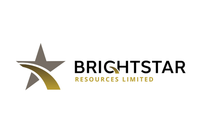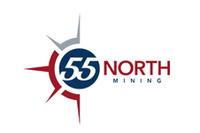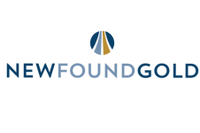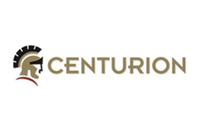With the year almost at an end, execs from Colombian Mines, Radisson Mining, Calibre Mining and Energold Drilling recap 2015 gold trends.
2015 is nearly at an end, and it’s fair to say the gold price has had a tough time.
For much of the year, the yellow metal was pressured by concerns that the US Federal Reserve would raise interest rates. Ultimately that did in fact happen — in a unanimous decision last Wednesday, members of the Federal Open Market Committee opted to raise the target range of the federal funds rate to 0.25 to 0.5 percent.
The gold price initially didn’t react much to that announcement, but by Thursday it was struggling, with COMEX gold futures for February hitting a six-year low of $1,049.60 per ounce. Since then, however, it’s bounced back a little. As of 4:00 p.m. EST on Monday, it was changing hands at $1,078.20 per ounce.
To learn more about the gold trends that impacted the market in 2015, and in particular to find out how the tough market affected companies, the Investing News Network (INN) reached out to execs in the gold space. Below, Robert Carrington, president, CEO and director of Colombian Mines (TSXV:CMJ); Hubert Parent-Bouchard, director of finances at Radisson Mining (TSXV:RDS); Greg Smith, president, CEO and director of Calibre Mining (TSXV:CXB); and Jerry Huang of Energold Drilling (TSXV:EDG) share their thoughts on those topics.
INN: What did you expect from 2015 at the end of last year? Were your expectations correct?
Carrington: Our expectations for 2015 turned out to be nearly correct. I did not expect 2015 to be any better than 2014, and was certainly not disappointed there. I did think there would be brief opportunities for financings, which there were, but they were briefer than even I had anticipated.
Parent-Bouchard: The gold market picked up nicely at the beginning of 2015, thus I was much more positive than in 2014. After a rally from around $1,150 to $1,300, there was not much follow up, and we saw the price hit new multi-year lows. Thus, the market did not meet my expectations.
Smith: Like most, we had expected some recovery in metals prices, but that did not materialize. That said, Calibre had a very busy exploration year, with continued fieldwork and drilling by our partners B2Gold (TSX:BTO,NYSEMKT:BTG), IAMGOLD (TSX:IMG,NYSE:IAG) and Rosita Mining on our Borosi concession in Nicaragua. Additionally, we signed an agreement with Centerra Gold (TSX:CG), which is now earning into the La Luz project by spending $7 million before December 2019; active exploration [there] includes a drilling program commenced in Q4 2015.
Huang: Miners had to learn to be prudent business operators with the industry heading into year five of this “new normal” where AISC, lower margins, resource nationalism, environmental concerns, governmental challenges and activist investors have all become larger influences on day-to-day operations.
As a global drilling group with clients in 25 countries, we have unique insight on activities from a variety of mining groups. I would say our expectations were met, with most of our clients reining in greenfield exploration and focusing on what makes revenue and profits: anything that lowers reliance on debt and capital markets. Work focused on brownfield drilling — production drilling, underground work and extending life-of-mine operations. If something is already permitted and making money, it is a far easier argument to spend money on than taking the high-risk/high-reward road of greenfield exploration.
While we forecasted a rebound in gold prices, it was within the $1,200 range; nothing outrageous [should happen] unless the US debt ceiling gets to the 11th hour again with public services shutting down. When that happened in 2011, gold spiked to nearly $1,900. Unfortunately, it got quietly extended this time without mainstream media, so the can has been kicked down to 2017. We know it’s an inevitability, but our clients have all worked around this $1,100 to $1,200 range and have become great stewards at cost control.
INN: In 2015, what was the most challenging aspect of the gold market?
Carrington: In the junior market, the most challenging aspects were twofold. One was the almost complete lack of investor appetite. The other saw the majors shift dramatically from acquiring assets to selling assets. Both helped to suck the lifeblood out of the junior sector.
Parent-Bouchard: Investors look at gold in US dollars, and a lot of people have been on hold waiting for a rate raise in the US before making a decision on the gold market. It is difficult to get interest from new investors in this market since a lot of them are still healing their wounds from the bear market we are still in.
Smith: Given the continued weakness in metals prices, the most challenging aspect continues to be the ability to raise funds, especially at prices or terms that benefit current shareholders. In the case of Calibre, we are fortunate that we have a strong treasury with $1 million in cash; we also have four partners earning into different portions of our land holdings, all of which are fully funding the current exploration programs in Nicaragua. These partnerships allow Calibre to selectively spend on its 100-percent-owned ground and maintain a strong balance sheet without being “forced” to go to the market under the current conditions. This is a cyclical business, and the challenge in front of us is to not only survive, but continue to advance Calibre’s large land holdings of over 900 square kilometers while positioning ourselves for improved metal prices, which will happen at some point.
Huang: The most challenging aspect continues to be the unpredictability of the gold price and lack of access to capital — heavily influenced by mainstream media and developed nations’ posted figures (GDP growth, PMI, etc).
If you recall, the beginning of the year almost always sees the euphoria of the famed “PDAC boom,” and 2015 was no different. Fears of a European credit crisis and a “Grexit” helped gold shine in the first quarter, not to mention several large acquisitions and placements from Chinese funds (Pretium Resources (TSX:PVG,NYSE:PVG)). However, the challenge was in timing these windows of opportunities, as they were short and interest waned very quickly.
INN: What was the most important milestone for your company in 2015? How did it affect share price?
Carrington: During 2015 we worked hard to lay groundwork to generate revenues and sustain the company through 2017. I expect to see confirmation of this by year end 2015, after which point Colombian Mines will be in a much stronger position. To date, this has had no affect on our share price, but puts the company in an extremely strong position going forward in 2016 and 2017.
Parent-Bouchard: The updated resource estimate for the O’Brien project was a great milestone for Radisson. It helped move forward with the PEA, which is now finalized. It also underlined a number of opportunities to increase the resource by additional drilling. Our team of geologists worked with a 3D block model developed by an independent consultant to identify many drilling targets laterally, at shallow depth and at depth to add resources at the project. Some exploration targets were also defined to test several areas that haven’t been worked in the past. The resource update was published in April, and it seems like the market anticipated the news. Hence, from March to mid-April, the stock moved from $0.10 to $0.145, representing a 45-percent gain.
Smith: Calibre had several milestones in 2015, including the completion of more than 5,900 meters of drilling on the Eastern Borosi project, funded by IAMGOLD. That resulted in several high-grade gold-silver discoveries and the signing of the option agreement on the La Luz project with Centerra Gold; Centerra can earn 70 percent by spending $7 million before December 2019.
Rosita Mining continued to advance the Rosita D project, with work including a drill program completed in Q3 2015. Meanwhile, B2Gold advanced a new discovery at Monte Carmelo, and is working toward earning into 70 percent of that project. Calibre also completed a Phase 1 drilling program at the 100-percent-owned Montes de Oro gold discovery. Calibre’s share price held up well for most of the year; however, the further reduction in the gold price in Q3 2015 saw the share price come off as part of the overall selling atmosphere in the gold sector.
Huang: The most important milestone for Energold in 2015 continues to be the execution of our diversification strategy.
While Energold prides itself on mining drilling, the market forgets that we are a diversified drilling group and that due to the mining slump, revenue from mining is just 30 percent of our gross annual revenue of $100 million. In 2014, energy services (oil sands drilling, geotechnical, geothermal, seismic) accounted for 60 percent of our business, and the remaining 10 percent came from the rig manufacturing division, where we build and sell water and multipurpose drill rigs.
Unfortunately, our stock price has fallen further, with the stock trading well below net book value and net asset value. In the last 10 years this has happened twice, and both times we bounced back well over 700 percent as the market recovered. What we pride ourselves on this time is that we are no longer just a mining driller, but a diversified drilling group with services in different sectors. We believe the market will take notice of our continued growth into areas such as geotechnical, geothermal and water drilling.
Stay tuned for Carrington, Parent-Bouchard, Smith and Huang’s thoughts on the gold market in 2016!
Securities Disclosure: I, Charlotte McLeod, hold no direct investment interest in any company mentioned in this article.
Editorial Disclosure: Calibre Mining, Colombian Mines and Radisson Mining are clients of the Investing News Network. This article is not paid-for content.
The Investing News Network does not guarantee the accuracy or thoroughness of the information reported in the interviews it conducts. The opinions expressed in these interviews do not reflect the opinions of the Investing News Network and do not constitute investment advice. All readers are encouraged to perform their own due diligence.
Related reading:
Gold Outlook 2014: Will Gold Bounce Back?
Gold Outlook 2015: Analysts Anticipate a Break from Turmoil





